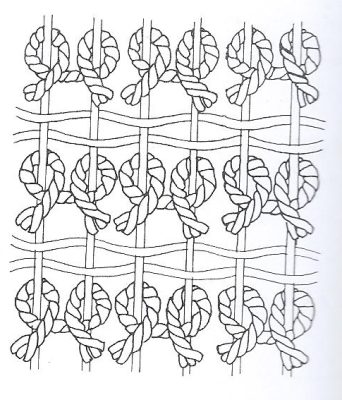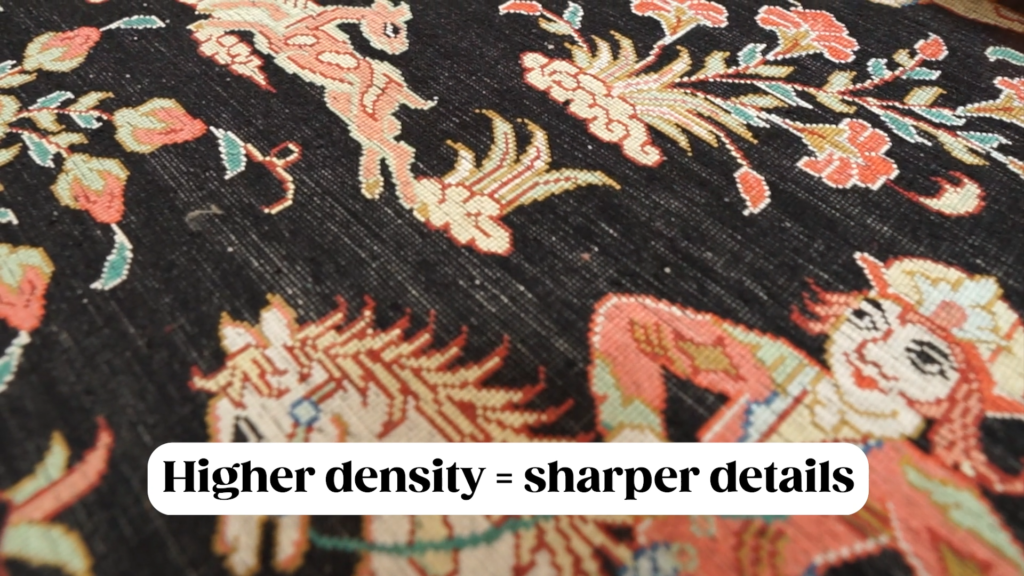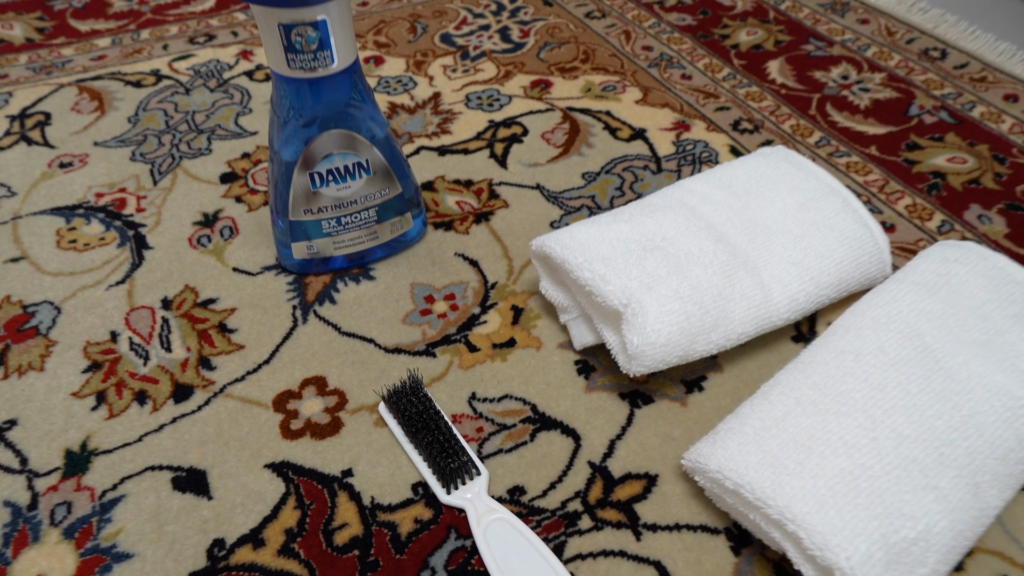Isfahan
Isfahan Rugs
Isfahan rugs are regarded as some of the finest quality woven in Iran. Although the rugs from this region come in a wide range of qualities, a fair amount of production is specifically dedicated to producing high-quality pieces.
Most of these rugs are woven with a wool pile on cotton or silk foundation, with a few specially woven silk accents running through the pile.
The rugs are dense and constructed with a higher-than-normal knot count, but they remain quite malleable despite their denseness.
With their intricate detailing, high knot count, and precision weaving, it takes weavers several years to complete a single Isfahan rug. All of these factors contribute to their relatively higher price.
Table of Contents
Origin of Isfahan Rugs
Isfahan rugs are woven in the Isfahan Province, comprising over 15 districts and several counties. Isfahan is an important city in Persia and a major weaving center in the country.
The Safavid kings who ruled the area were huge art lovers. Regarding the art of all types, nothing but the best was good enough for them.
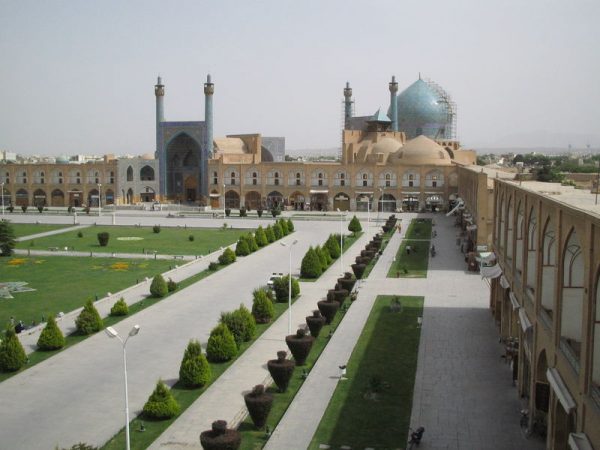
They attracted and encouraged artisans and craftsmen across all niches, from rug weaving to painting and architecture. To get the best from these skilled craftsmen, fine materials were acquired and given to them to practice their art.
Some art pieces from that era are still a huge attraction for art lovers worldwide. With the stunning artwork amassed in one location, Isfahan was eventually declared a world heritage site.
Rug weaving flourished in this region during the Safavid era, but the craft became stagnant when the Safavid dynasty ended after the Afghans invaded Iran.
It was not until much later, sometime in the 1920s, the people of Isfahan began weaving again in earnest. They slowly returned to their centuries-old tradition of weaving the characteristic Safavid designs, eventually becoming an important nexus of the Persian rug weaving industry.
Today, they are amongst the most wanted variety of Iranian rugs amongst serious rug collectors around the western world.
Isfahan Master Weavers
Isfahan rugs are some of the highest-quality rugs you can find anywhere. Isfahan has a long and rich history of rug making. One of this city’s most notable aspects is the multiple invasions and military occupations.
While these events disrupted the regular rug-making process in Isfahan, they gave rise to another unexpected facet.As different cultures settled in this cosmopolitan city, they increasingly added to its diversity in artwork, architecture, food, festivities, palaces, mosques, and rug weaving.
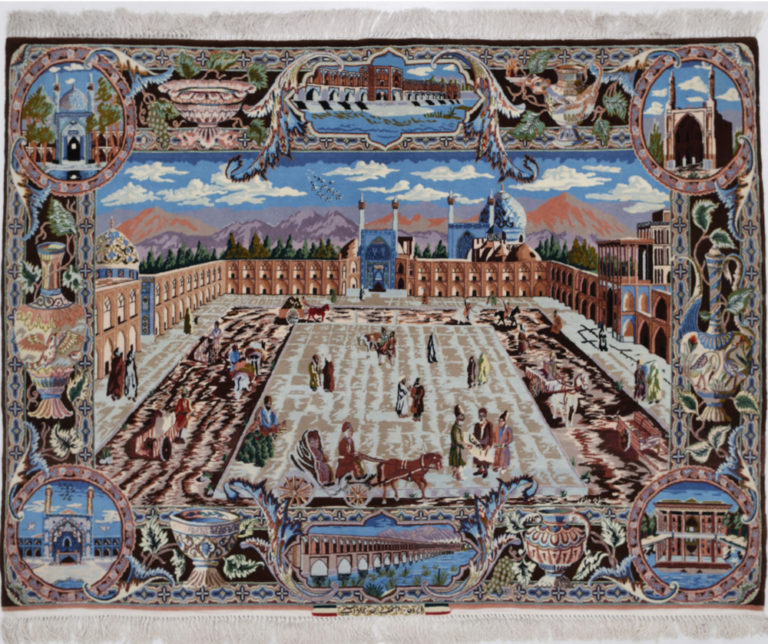
Every culture also brought along their master weavers who settled in Isfahan and made it their home. Sarafian, Zogagi, Asachi, Haghighi, Ghenaat, Mehdee, Dorri, and Nael are master weavers who have created stunning Isfahan rugs.
Their unswerving commitment to technical perfection is evident in the symmetry of the designs and the high knot count. They were so proud of their creations that they often signed the finished rugs. The signatures served as a stamp of quality.
Isfahan rugs created by these master weavers are highly sought after by rug enthusiasts and antique collectors. Some have fetched millions of dollars at recognized auction houses worldwide.
The Sarafian
The Sarafian family from Isfahan was and still is one of the most famous master weavers in the region. Only the best locally sourced wool is used in their creations. The rugs are finely hand knotted and have silk warps and relatively short piles. The average knot count of these rugs may be anywhere from 500 KPSI to more than 1000 KPSI, which is much higher than the knot count of an average rug.
The distinguishing mark of most rugs the Sarafian family makes is the inscription cartouche at one end with the name written in Persian and sometimes in English.
The Hekmatnejad
Hekmatnejad is another modern Isfahan rug weaver who creates smaller pieces with silk warps and a signature cartouche at one end.
How to Identify an Isfahan Rug?
Isfahan rugs are among the finest Persian rugs, celebrated for their rich history, luxurious materials, and unparalleled craftsmanship. When you come across one, you can’t help but notice its charm. However, identifying a genuine Isfahan rug requires a keen eye and some knowledge about its unique characteristics.
Let’s delve into the key features to look for.
Materials
Authentic Isfahan rugs are typically crafted from high-quality materials like fine-quality wool and silk. These rugs typically have a cotton foundation, although there are instances where a silk base is used instead.
The wool used in these rugs is usually Kurk or Kork wool, obtained from baby sheep, and is known for its softness and durability. Some rugs may also be made with a combination of wool and silk.
Weaving Techniques
Weavers of Isfahan handmade rugs employed superior rug-making techniques, evident in the finished product’s high quality. They took great care in creating one knot at a time with a higher knot count per square inch than many other Persian rugs.
Vertical looms were used to manufacture these rugs using double wefts and Persian knots.
The knot commonly associated with double weft in rug weaving is known as the “Turkish” or “Ghiordes” knot.
In the Turkish knot, the weft yarn is looped around two warp threads and then pulled back through the center, creating a double weft effect. This knotting technique contributes to the durability and stability of the rug, as the double weft helps secure the knots tightly to the warp threads.
Knot Density
Isfahan rugs are known for their high knot density, which ranges between 500 to 700 knots per square inch. This high knot density is part of what gives Isfahan rugs their intricate designs and long-lasting quality. However, remember that a higher knot density does not always equate to a better rug—it’s just one aspect to consider.
Isfahan rugs are knotted on either cotton or silk foundations with a knot density of up to 1000 knots per inch. The average minimum knot count is about 120 KPSI – that’s just the minimum. Most Isfahan carpets have much higher knot counts of about 500 to 700 KPSI.
Because of the high knot counts, every detail in the design can be seen very clearly, adding to the allure of the rug. Cutting the pile very close also helped accentuate the elaborate design elements.
Design and Patterns

Isfahan rugs are known for their harmonious balance and symmetrical designs. These rugs feature intricate designs inspired by architectural motifs, nature, and the city’s rich cultural and historical scenes.
Delicate floral patterns, along with classic curvilinear elements such as vines, tendrils, scrolls, and lacing patterns, are commonly incorporated into the design of these rugs, making the details clearly visible.
The edges typically have a broad main border flanked by smaller, intricate secondary borders.
Other designs featured on these rugs are the allover Shah Abbasi, Tree of Life, pictorial schemes, hunting, and vase. Still, the most commonly seen design remains the medallion and triangle surrounded by various flowers and islimies or vines.
Shah Abbassi
The elaborate and ornate Shah Abbassi floral design is one of the most popular traditional motifs in Isfahan rugs. This distinctive design was named after Shah Abbas, who first commissioned it to adorn Isfahan’s mosques. The pattern was a huge hit, and its popularity rose quickly.
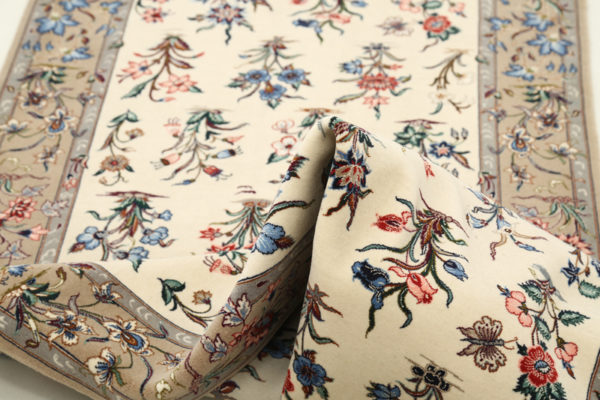
Before long, weavers in the surrounding regions and other regions around Persia also started to incorporate the Shah Abbassi floral design into their creations.
The Shah Abbassi floral design was also hugely popular in Western markets, which are the biggest buyers of Persian rugs.
Not surprisingly, weavers from Persia and other rug-making countries started incorporating the Shah Abbassi floral design into their rugs.
Mosque of Shah Lutf Allah
Another popular pattern in Isfahan rugs is a floral design with a central medallion and four corner pieces. Some weavers were inspired by historical buildings and mosques that dotted the landscape. The most famous architectural source of inspiration is the well-known mosque of Shah Lutf Allah.
Colors
The color palette of Isfahan rugs tends to be vibrant yet balanced.
Common colors include rich reds, deep blues, and striking ivories. These rugs often have a central medallion contrasting with the field color, creating a striking visual effect.
The colors used in these rugs are very distinctive. Twelve colors are usually used to create the designs woven on a field of ivory. Deep blue, bright red, navy blue, and bold earth colors were abundant.
The favored color choice was a light palette against a rich ivory-colored background. The use of lighter colors on an ivory setting gave the rugs a regal, sophisticated look, which only reinforced their reputation as being fit for royalty.
Some newer pieces have a more subdued palette, making them more compatible with Western home décor.
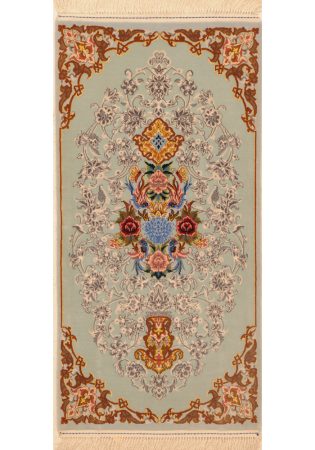
Typical Sizes Available
Home Styling Tips Using Isfahan Rugs
Are you aiming to elevate your home’s look?
An Isfahan rug can be your secret weapon. These rugs can be fantastic statement pieces due to their intricate patterns and vibrant colors. Perfectly matched with various interior design styles, from minimalist to boho, they can lend depth and personality to any room.
An Isfahan rug can define areas such as a cozy reading nook in large spaces. In compact rooms, a well-placed rug can add warmth and give an illusion of more space.
Remember, the key is to balance the complex designs of Isfahan rugs with simple furniture to maintain harmony. Using an Isfahan rug is about decorating and expressing your unique style.
How to Care for Isfahan Rugs
Caring for your Isfahan rug ensures its beauty and durability for years.
Regularly vacuum to remove surface dust and prevent grime from settling. However, avoid vacuuming the fringe to prevent damage.
When it comes to stains, act fast! Blot, don’t rub, to prevent the stain from spreading.
Consider a professional rug cleaning service for deep cleaning, as they know how to treat these delicate rugs.
Lastly, if your rug needs to be stored, ensure it’s clean, dry, and rolled, not folded, to avoid creases. Keep it in a cool, dry place away from direct sunlight to prevent fading.
Proper care will keep your Isfahan rug looking its best, serving as a testament to your splendid taste in decor.
Related Categories
Traditional Rugs | Tabriz | Silk and Wool Rugs | Nain | Qum
